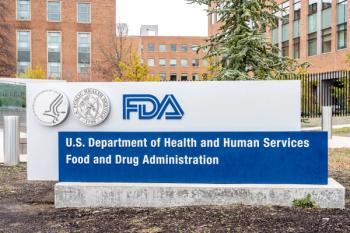
Hurdles Hindering the Translation of AI-Powered Research into Tangible Clinical Benefits
In this Pharmaceutical Executive video interview, Murray Aitken, Executive Director of the IQVIA Institute for Human Data Science, discusses why no novel active substances have yet been brought to market through AI technology despite increasing investments in the space for drug discovery as shown in IQVIA's Global Trends in R&D 2024 report.
Despite increasing investments in AI for drug discovery, the report mentions that no novel active substances have yet been brought to market through this technology. What are the key hurdles hindering the translation of AI-powered research into tangible clinical benefits, and what future developments might be needed to overcome these challenges?
So, we are all excited about the potential for artificial intelligence and machine learning to transform all of our lives. And not least, in the area of drug discovery and clinical development. We are following the sort of cohort of molecules that we can see, were originated by AI research companies, about 30 trials per year that we've been tracking the last two or three years or so they are working their way through clinical development. None of them has come to market yet that we're aware of. And again, not every company discloses the sort of technology that underlies their drug discovery efforts, but best we can tell. We're still a little bit shy of an AI discovered candidate actually reaching the market, but we're moving towards it. That's clear.
I think the main opportunities we're seeing for AI lies in drug target identification, which is really about applying AI to vast omics datasets of one type or another to characterize disease states and identified novel druggable targets. We also see AI being used to design the drug. So that's where AI is being used to analyze molecule’s structure, molecular dynamics, and so on and actually designed the drug candidate itself. And then we also see AI being used to perform trial simulation and which is also a way to help optimize clinical trial design. And we're seeing that being applied to some of these new drugs that are coming into the pipeline. We also see AI being deployed as trials are being executed, in particular, to identify optimal sites, investigators and target patient populations, for potential recruitment into studies. So, we do see a lot of activity there, again, all focused on trying to achieve enrollment in shorter timelines, with more eligible subjects being screened and fewer dropouts along the course of the trial. So, you know, I think we're still in very early stages of the AI revolution.
It's a crawl, walk, run progression. And, you know, we're definitely crawling. We're, we're almost walking, we might say, but I think we're going to see more progress over the next several years before we can really declare definitively the magnitude of the positive impact that AI and machine learning is having on the clinical development and innovation ecosystem. Which means, you know, more drugs being developed faster at lower cost, leading to better treatments for more patients. Right. So, if that's the goal, we're still a little bit. You know, we're still a few years away from that goal fully being achieved.
Newsletter
Lead with insight with the Pharmaceutical Executive newsletter, featuring strategic analysis, leadership trends, and market intelligence for biopharma decision-makers.





